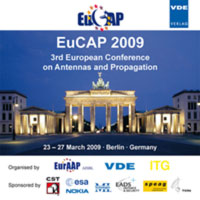Airborne Nose Radome
Conference: EuCAP 2009 - 3rd European Conference on Antennas and Propagation
03/23/2009 - 03/27/2009 at Berlin, Germany
Proceedings: EuCAP 2009
Pages: 2Language: englishTyp: PDF
Personal VDE Members are entitled to a 10% discount on this title
Authors:
Qiang, Zhang (Nanjing Research Institute of Electronics Technology, Nanjing, P. R. China)
Qiang, Zhang (National key Lab. of Antenna and Microwave Technology, P. R. China)
Abstract:
Airborne nose radome is different from other kinds of radomes in that on its top there are usually a pitot-tube(air-pressure detector) and tube-base. The pitot-tube and tub-base not only decrease the transmission coefficient of the radome but also increase sidelobe level of antenna. Due to its electrical-large-scale, it is difficult to analyze the effects of pitot-tube on the performance of radome by MoM or FD-TD on personal computer. In this paper, a hybrid method and BOR technology are employed to attack this problem. The radome is divided into two areas: one is in the top, the other is in flat part. In flat area where curvature is small and varies smoothly the equivalent electric and magnetic currents on the surface can be calculated by PO; then their contribution on the top area can be evaluated. In the top area where curvature is large and structure is complex the electric and magnetic currents on this area are enforced to obey combined equations in which flat area contribution are taken into account and MoM procedure can be applied to solve those equations.


